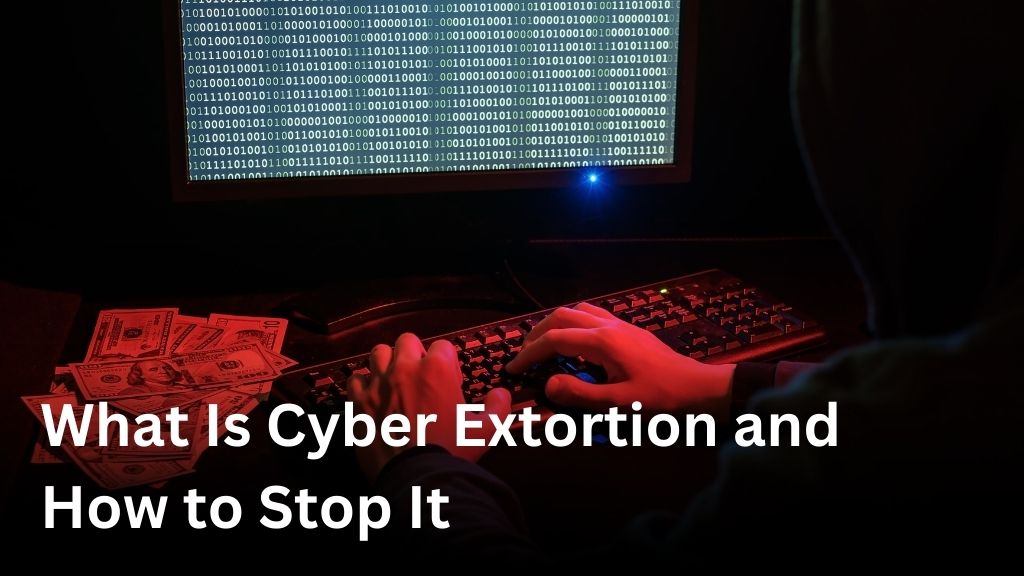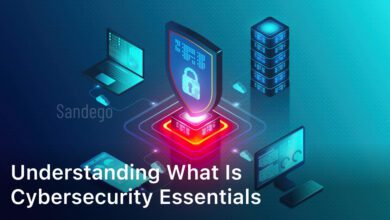Welcome to our comprehensive guide on cyber extortion! In this article, we will explore the concept of cyber extortion, its definition, and essential information to help you understand the threat it poses. We will also discuss effective strategies to protect yourself and your organization against cyber extortion.
Cyber extortion is a malicious act where cybercriminals use various tactics to gain unauthorized access to your sensitive data or systems. Once they have control, they demand a ransom in exchange for restoring access or preventing the release of compromised information.
To protect against cyber extortion, it is crucial to stay informed and prepared. In the following sections, we will delve into the different tactics employed by cybercriminals and share real-world examples to raise awareness about this growing threat. We will also provide practical advice on implementing preventive measures and creating an effective response plan.
By understanding the nature of cyber extortion and taking proactive steps, you can significantly reduce the risk of falling victim to these malicious attacks. So, let’s dive in and empower ourselves to stay one step ahead of cybercriminals!
Understanding Cyber Extortion Tactics

In the world of cybersecurity, cyber extortion has become a prevalent threat for individuals and businesses alike. Cybercriminals employ various tactics to carry out their malicious activities and extort their victims. Understanding these tactics is crucial in order to effectively protect yourself and your organization against cyber extortion.
Let’s take a closer look at some common cyber extortion tactics:
- Ransomware: One of the most well-known tactics, ransomware involves encrypting the victim’s data and demanding a ransom for its release. The victim is often given a deadline, after which the data may be permanently deleted or shared publicly.
- Distributed Denial of Service (DDoS) Attacks: In a DDoS attack, the cybercriminal floods a target’s website or network with traffic, causing it to become overwhelmed and unavailable to legitimate users. The attacker then demands a ransom to stop the attack and restore normal service.
- Data Theft and Exfiltration: Cybercriminals may gain unauthorized access to sensitive data and threaten to expose or sell it unless a ransom is paid. This tactic can have severe legal and reputational consequences for individuals and businesses.
- Identity Threats: Hackers may steal personal information, such as login credentials or financial data, and use it to impersonate the victim or carry out fraudulent activities. They then demand a ransom to prevent further harm or public exposure.
These are just a few examples of the tactics employed by cybercriminals in their extortion schemes. The methods used are constantly evolving and becoming more sophisticated, making it essential to stay informed and take proactive measures to protect yourself.
Protecting Against Cyber Extortion
When it comes to safeguarding your data and finances against cyber extortion, taking proactive steps is crucial. By implementing effective preventive measures, you can significantly reduce the risk of falling victim to these malicious schemes. Here are some best practices to consider:
- Cybersecurity protocols: Ensure your systems are up-to-date, and implement robust security measures such as firewalls, intrusion detection systems, and antivirus software.
- Employee training: Educate your staff about the risks of cyber extortion, including phishing emails, social engineering, and other common tactics. Encourage them to exercise caution and report any suspicious activity.
- Regular vulnerability assessments: Conduct regular audits of your systems to identify potential vulnerabilities and address them promptly. This includes patching software vulnerabilities and ensuring proper access controls are in place.
- Data backup: Regularly back up your critical data to an offline or cloud-based system. This way, even if you fall victim to an extortion attempt, you can restore your data and minimize the impact.
Having an effective response plan in place is equally important in dealing with a cyber extortion attempt. Consider the following steps:
- Establish an incident response team: Designate individuals within your organization who will be responsible for managing and responding to cyber extortion incidents.
- Define escalation procedures: Clearly outline the steps to follow when an extortion attempt occurs, including who to notify, how to preserve evidence, and when to involve law enforcement.
- Engage legal counsel: Work with legal professionals who specialize in cybercrime to ensure you are prepared to handle any legal implications that may arise from an extortion incident.
- Communicate internally and externally: Develop a communication strategy to keep internal stakeholders informed and involved. Additionally, consider if it is necessary to involve external parties, such as customers, partners, or law enforcement, and define the channels and messages to be used.
By implementing these preventive measures and having a well-defined response plan, you can significantly enhance your defenses against cyber extortion. Remember, staying proactive and prepared is key to protecting your digital assets from this ever-evolving threat.
In this section, we’ll delve into the role of cyber extortion insurance in mitigating the financial impact of an extortion incident. Cyber extortion insurance is a specialized coverage designed to protect individuals and businesses from the monetary losses associated with ransomware attacks and other cyber extortion attempts.
Understanding Cyber Extortion Insurance
To fully comprehend the significance of cyber extortion insurance, let’s explore the coverage it offers and the benefits it provides:
- Financial Protection: Cyber extortion insurance helps cover the costs associated with handling extortion incidents, such as ransom payments and expenses related to legal counsel and forensic investigations.
- Reputation Management: If your organization becomes a victim of cyber extortion, the insurance policy can help cover the costs of reputation management efforts, including public relations and communication strategies to mitigate reputational damage.
- Expert Assistance: Cyber extortion insurance typically provides access to a network of professionals who specialize in responding to and resolving extortion incidents, including negotiators, cybersecurity experts, and legal advisors.
- Business Interruption: In the event of a cyber extortion incident that disrupts your operations, cyber extortion insurance may offer coverage for the financial losses resulting from business interruption.
- Preventive Measures: Some cyber extortion insurance policies may even help cover the costs of implementing preventive measures to enhance your organization’s cybersecurity posture, including employee training and technology upgrades.
By obtaining cyber extortion insurance, individuals and businesses can minimize the financial impact of a cyber extortion incident and gain peace of mind knowing that they have a safety net in place. It’s important to carefully review the policy terms and conditions, ensuring that it aligns with your specific needs and risk profile. Consider consulting with an insurance professional who specializes in cyber insurance to find the right coverage for your organization.
Now that we understand the role of cyber extortion insurance, let’s move on to the next section to explore the recovery process after falling victim to cyber extortion.
Recovering from Cyber Extortion
Recovering from a cyber extortion incident can be a daunting process, but with the right steps and guidance, you can regain control and restore normalcy to your digital operations. Here are the essential actions to take following an extortion attempt:
- Assess the Situation: Start by determining the extent of the damage caused by the cyber extortion attack. Identify affected systems, compromised data, and potential vulnerabilities that need immediate attention.
- Secure Evidence: Preserve any evidence related to the cyber extortion incident by taking screenshots, recording timestamps, and documenting any communication with the extortionist. This evidence will not only assist law enforcement but also aid in recovery efforts.
- Report the Crime: It is crucial to report the cyber extortion incident to your local law enforcement agency or the appropriate cybercrime unit. They will provide guidance on how to proceed, investigate the matter, and potentially track down the perpetrators.
- Engage Legal Support: Consult with an attorney specializing in cybercrime to understand your legal rights and obligations. They will help you navigate any potential legal consequences and recommend appropriate actions based on your specific situation.
- Notify Relevant Authorities: In addition to reporting the crime locally, consider reporting the incident to national or international cybercrime authorities. This ensures that the incident is recorded and contributes to global efforts in combating cyber extortion.
- Implement Security Measures: Strengthen your cybersecurity defenses by addressing the vulnerabilities exposed during the attack. Patch software, update security protocols, and enhance employee training to mitigate the risk of future incidents.
- Seek Professional Assistance: Enlist the help of cybersecurity professionals with experience in recovering from cyber extortion. They can assist in identifying and removing any malware, restoring compromised data, and ensuring your systems are secure.
- Monitor and Test: Continuously monitor your systems for any suspicious activity and conduct regular security audits to identify potential weaknesses. Regularly testing your network security can help prevent future cyber extortion attempts.
By taking these steps and seeking the necessary support, you can recover from a cyber extortion incident and minimize the impact on your personal or business operations. Remember, swift action and collaboration with law enforcement and cybersecurity experts are crucial in mitigating the effects of cyber extortion.
Conclusion
In conclusion, this article has provided valuable insights into the world of cyber extortion. By understanding the nature of this threat and the tactics employed by cybercriminals, individuals and businesses can take proactive steps towards protection.
Implementing cybersecurity protocols, conducting regular employee training, and having an effective response plan are crucial in safeguarding digital assets from extortion attempts. It is essential to stay vigilant and stay informed about the evolving methods used by hackers.
Remember, prevention is key when dealing with cyber extortion. By taking the necessary precautions and being prepared, you can significantly reduce the risk of falling victim to these malicious attacks. Protect your data, finances, and reputation by prioritizing cybersecurity and adopting a proactive approach to safeguarding your digital presence.
FAQ
What is cyber extortion?
Cyber extortion is a criminal act where cybercriminals use various tactics to gain unauthorized access to sensitive information or systems and demand ransom or other forms of payment to prevent a harmful action or release of the data.
What are some examples of cyber extortion tactics?
Cyber extortion tactics can include Distributed Denial of Service (DDoS) attacks, ransomware attacks, data theft threats, and blackmailing individuals or organizations with the threat of exposing confidential information.
How can I protect myself and my organization against cyber extortion?
To protect against cyber extortion, it is essential to implement cybersecurity best practices, including strong and regularly updated passwords, multi-factor authentication, regular data backups, network security measures, employee training on cybersecurity awareness, and having a well-defined cyber extortion response plan.
What is the role of cyber extortion insurance?
Cyber extortion insurance provides financial protection and assistance in the event of a cyber extortion incident. It can cover the costs of ransom payments, legal expenses, forensic investigations, PR efforts, and other expenses associated with the recovery process.
How can I recover from a cyber extortion incident?
Recovering from a cyber extortion incident involves taking immediate action, such as disconnecting affected systems, notifying law enforcement, and seeking professional assistance to mitigate the damage. It is crucial to preserve evidence and work closely with legal and cybersecurity experts to regain control of compromised data and systems.






